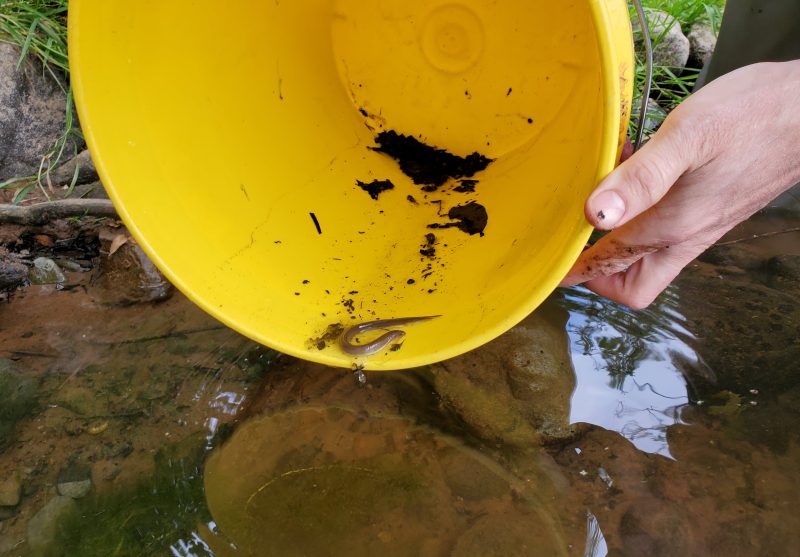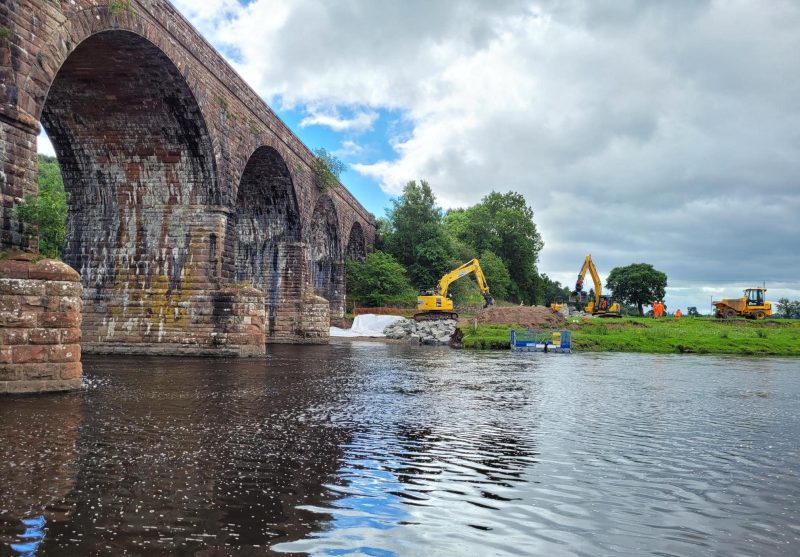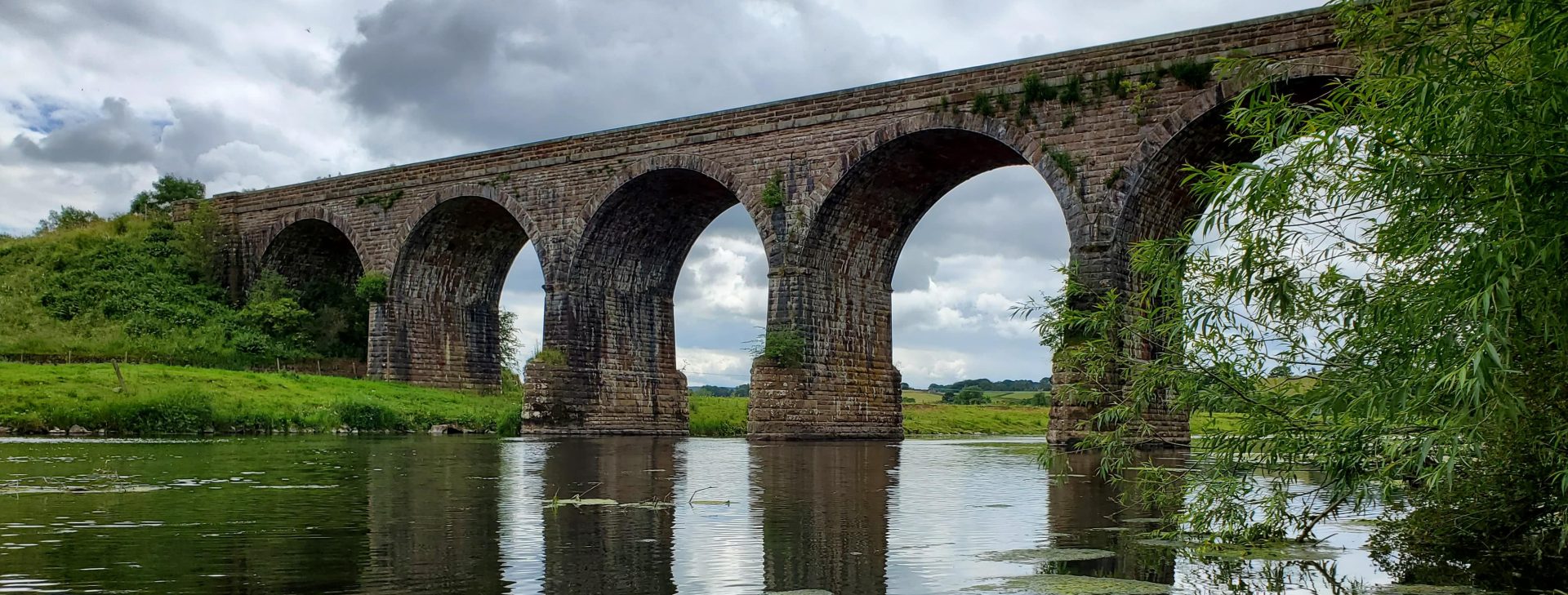-
Project title
Working with Network Rail on Viaducts in Cumbria
-
Lead handler + team members
Andy Ainsworth
-
Clients
Network Rail
Teams of ecologists from our Manchester and Edinburgh offices worked with Network Rail over the summer as they carried out vital engineering and construction repairs to the Long Meg and Eden Goods viaducts in Cumbria.
The two viaducts serve the popular West Coast Main Line through Cumbria, enabling the railway to cross the River Eden. These 19th century structures are held up by piers standing in the river itself, and the years of water flow have gradually scoured holes at the base of the supports, threatening their structural integrity. It was vital that Network Rail were able to strengthen the piers by filling the holes with waterproof concrete and surrounding them with rock armour, to ensure the viaducts were safe enough for trains to continue to travel across them.
However, the river Eden, according to Natural England, is one of the most diverse rivers in Europe – in ecological and biodiversity terms. It also has excellent water quality that needed to be protected. The river and its surrounding habitats support lots of protected species, and the entire length of the river and its tributaries are classified as a Special Area of Conservation (SAC) and a Site of Special Scientific Interest (SSSI). This means that Network Rail had to ensure their engineering work was carried out responsibly and caused minimal disruption to the wildlife and plant life present. This is where Ecus came in.

Habitats Regulation Assessment (HRA)
We initially conducted a Habitats Regulation Assessment (HRA) so that we could identify the aspects of the site that needed protecting – the surrounding woodland, the water quality, the nature of the riverbed, and the species of wildlife they all support. We identified a range of protected species– lamprey, salmon, otters, smelt, and white-clawed crayfish.
Our ecologists worked closely during the HRA with Network Rail, their engineering designers from WSP, Natural England, and the Environment Agency to assess the potential impact of the construction work and design the measures that needed to be put in place to mitigate these impacts.

Mitigation and Ecological Work
- Ecological Clerk of Works (ECoW) meaning our ecologists were on site seven days a week during the three months of construction to ensure all works complied with our HRA recommendations.
- We carried out (under licence) lamprey rescue via electro-fishing. The silty sediment under the viaducts was ideal for lamprey to lay their eggs. By passing an electric current through the sediment, we caught the young fish and moved them to other suitable nursery grounds in the river.
- Disruption to the riverbed caused by the concrete pumping and excavations was minimised with the use of silt boom filters, which worked to catch sediment so it didn’t adversely affect water quality downstream. These were made of natural materials such as haybales.
- A nearby sandy cliff was home to a colony of nesting sand martins. The area was fenced off, plant machinery was not used nearby, and noise was reduced, so disturbance was kept to an absolute minimum.
- All work had to be concluded before the start of salmon migration at the end of September.
Construction and Engineering Projects
Our ecology and habitats teams are able to deal with large construction and engineering projects that involve multiple stakeholders and contractors. We have the expertise on-hand to deal with a range of ecological challenges, and this project is a great example of how we can support our clients through the entire project life-cycle, from the assessment phase through to completion. We can easily embed our teams into the organisational and practical aspects of these large projects and ensure that this kind of engineering and construction work is done in a way that is sympathetic to the natural environment.

